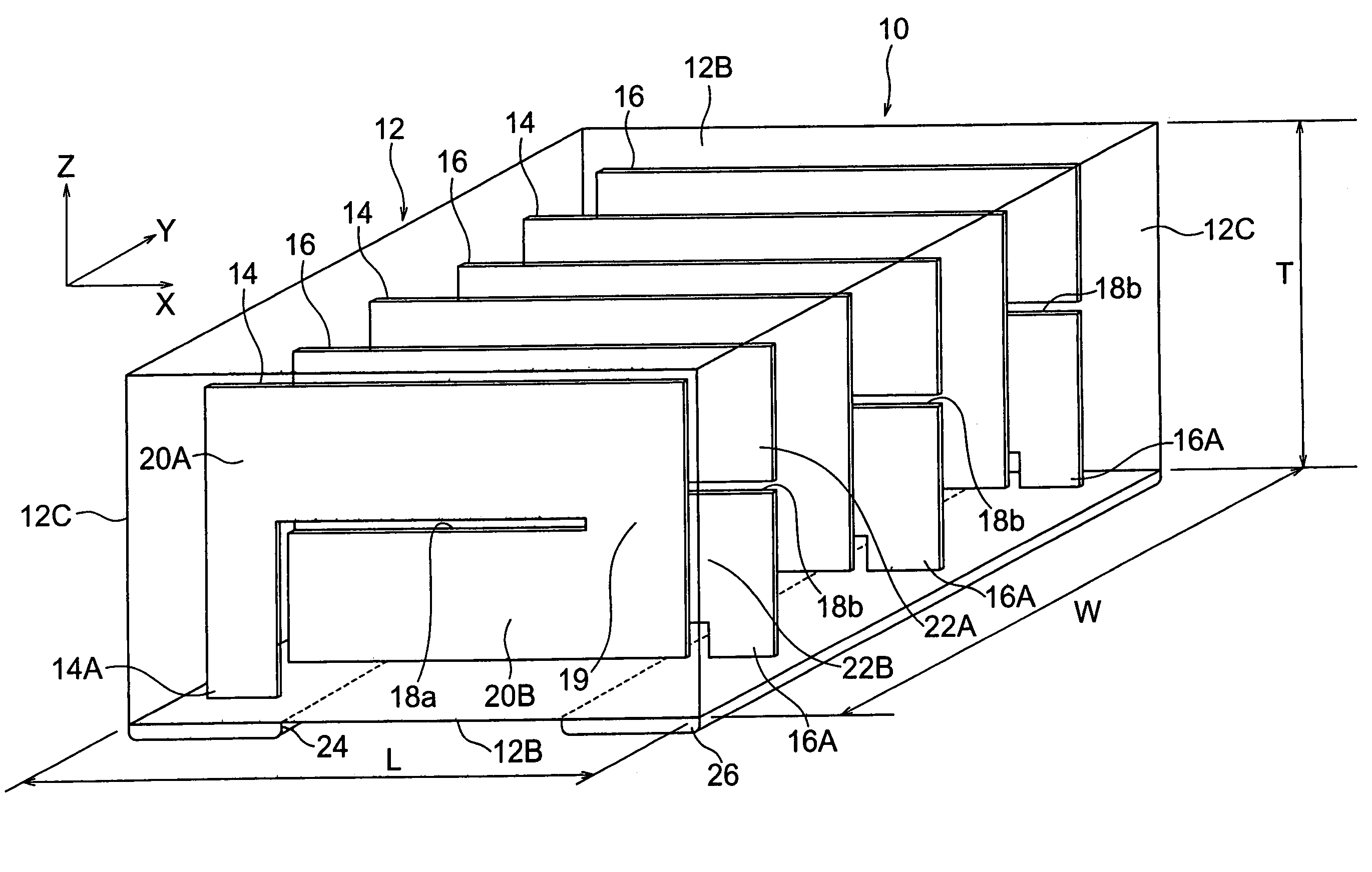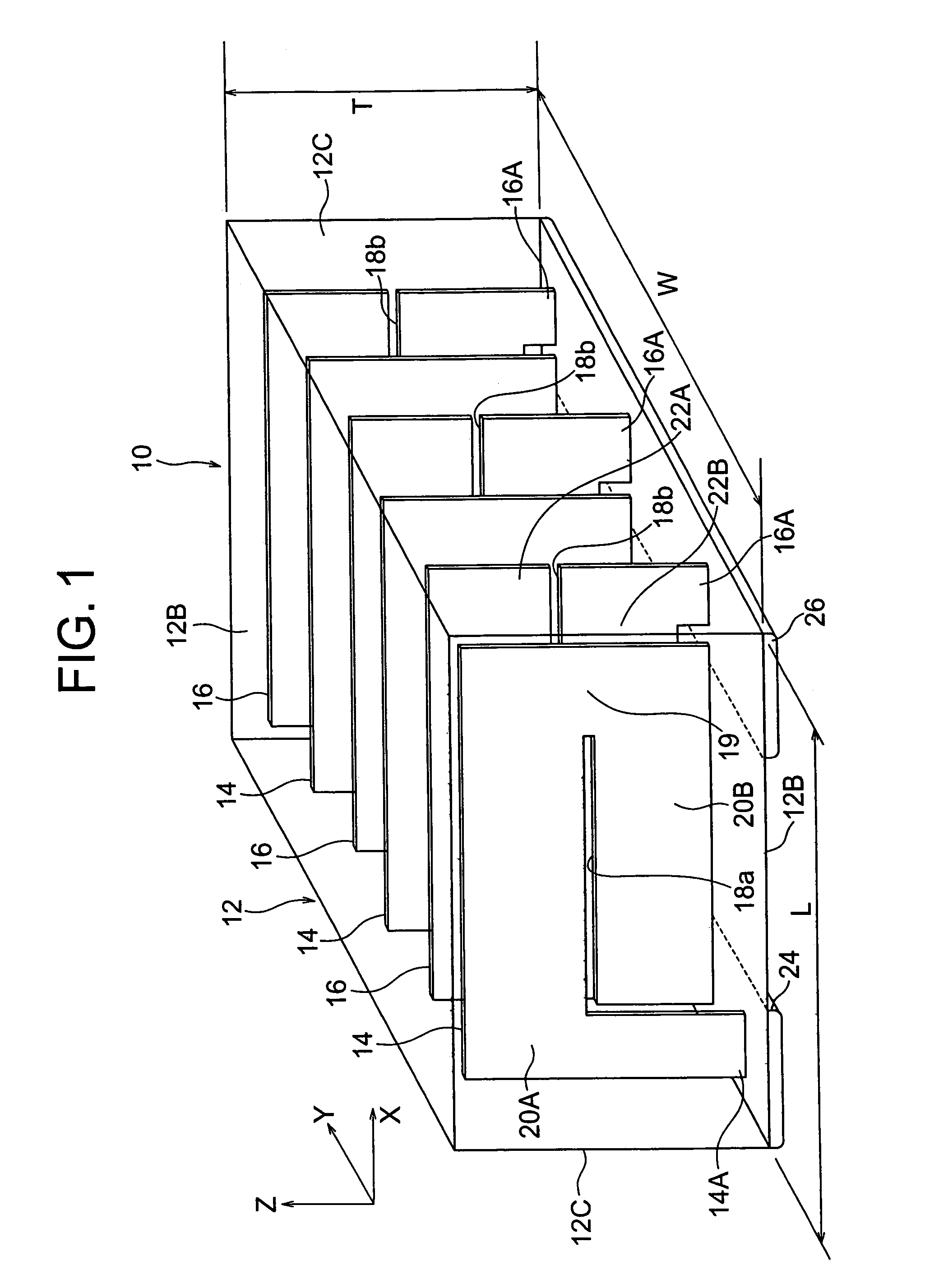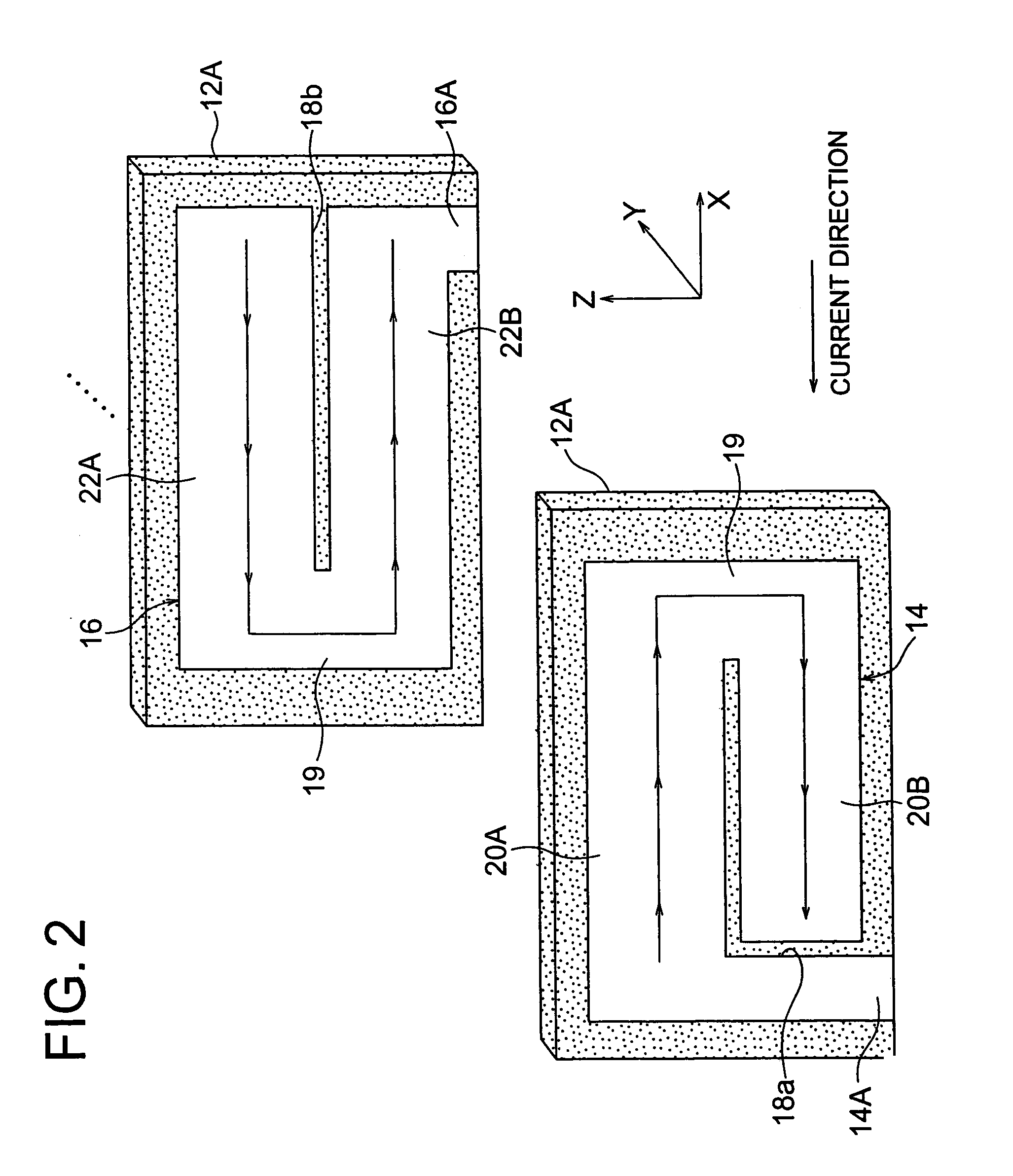Multilayer capacitor
a capacitor and multi-layer technology, applied in the field of multi-layer capacitors, can solve the problems of increasing the operating frequency of the central processing unit used for data processing apparatuses, increasing the current consumption of fixed capacitors, and remarkably increasing the current consumption of cpu, so as to reduce the effective inductance and reduce the voltage fluctuations of the cpu power source.
- Summary
- Abstract
- Description
- Claims
- Application Information
AI Technical Summary
Benefits of technology
Problems solved by technology
Method used
Image
Examples
first embodiment
[0065]First, the multilayer capacitor according to a first embodiment of the present invention will be explained. The multilayer ceramic capacitor serving as the multilayer capacitor according to the present invention (hereinafter simply referred to as a “multilayer capacitor”) 10 according to the present embodiment is shown in FIG. 1 to FIG. 3. As shown in these figures, the multilayer capacitor 10 is comprised of, as a main part, a dielectric body 12 comprised of a rectangular parallelepiped shaped sintered body obtained by sintering a stack of a plurality of ceramic green sheets comprising dielectric sheets.
[0066]A planar shaped internal conductor layer (first internal conductor layer) 14 is arranged at a predetermined position inside the dielectric body 12. A similar planar shaped internal conductor layer (second internal conductor layer) 16 is arranged inside the dielectric body 12 at farer side in the stacking direction Y than the internal conductor layer 14 separated by the c...
second embodiment
[0092]Next, a multilayer capacitor of a second embodiment of the present invention will be explained based on FIG. 4. Note that members common with members explained in the first embodiment are assigned the same reference numerals and overlapping explanations are omitted.
[0093]The multilayer capacitor of the present embodiment is structured substantially the same as the multilayer capacitor of the first embodiment. However, in the present embodiment, as shown in FIG. 4, two cuts 18c and 18d are formed from the bottom side and top side in an internal conductor layer 14 in parallel and in an inclined direction (with respect to X-axis and Y-axis) in the internal conductor layer 14. Further, an internal conductor layer 16 is formed with two cuts 18e and 18f in parallel and in an inclined direction in a substantially reverse positional relationship from the internal conductor layer 14.
[0094]As a result, an internal conductor layer 14 is formed with three channel parts 20A, 20B, and 20C a...
third embodiment
[0099]Next, a multilayer capacitor of a third embodiment of the present invention will be explained based on FIG. 5. Note that members common with members explained in the first embodiment are assigned the same reference numerals and overlapping explanations are omitted.
[0100]The capacitor of the present embodiment is also structured substantially the same as the capacitor of the first embodiment. However, in the present embodiment, the two cuts 18g and 18h are formed from the bottom side and top side of an internal conductor layer 14 in FIG. 5 in parallel and in the vertical direction (with respect to Z-direction) in the internal conductor layer 14. Further, an internal conductor layer 16 is formed with two cuts 18i and 18j in parallel with each other in the vertical direction in a positional relationship substantially opposite to the internal conductor layer 14.
[0101]That is, while the cut directions differ, in the same way as the second embodiment, two cut parts 18g to 18j are fo...
PUM
 Login to View More
Login to View More Abstract
Description
Claims
Application Information
 Login to View More
Login to View More - R&D
- Intellectual Property
- Life Sciences
- Materials
- Tech Scout
- Unparalleled Data Quality
- Higher Quality Content
- 60% Fewer Hallucinations
Browse by: Latest US Patents, China's latest patents, Technical Efficacy Thesaurus, Application Domain, Technology Topic, Popular Technical Reports.
© 2025 PatSnap. All rights reserved.Legal|Privacy policy|Modern Slavery Act Transparency Statement|Sitemap|About US| Contact US: help@patsnap.com



